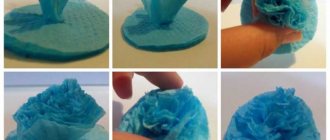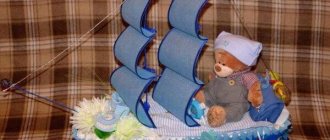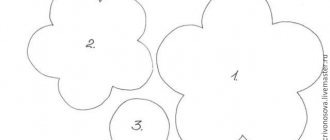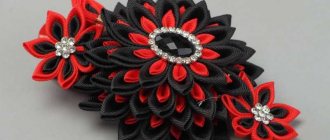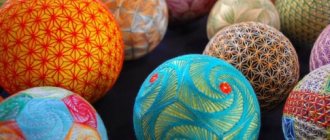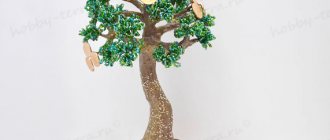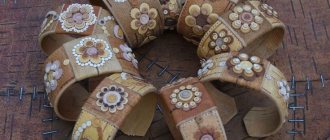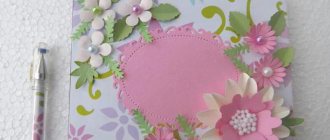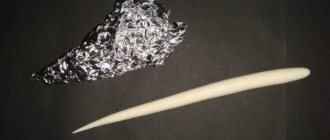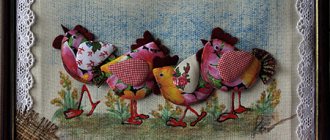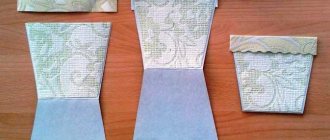The ancient amulet of the Indians of North America has been so firmly rooted in our lives for so long that few will remember its original essence and purpose. After all, according to legend, the web of a dream catcher delays all dreams and allows only good ones to pass through to a person. This is also a beautiful and effective accessory that you can easily make with your own hands!
Classic dream catcher
You will need a wooden hoop or a plastic hoop base, floss threads, a large long needle for beads and decor. To make the weaving more voluminous and impressive, choose threads with silk fibers. For decoration you need feathers, leather cords, voluminous beads, personal talismans and other little things.
There are different techniques for weaving a dream catcher, but the classic web is most often used. You need to tighten the free end of the thread with a knot, take it to the side a few centimeters and twist it around the ring. When the row ends, pass the thread with a needle through the first loop and tighten it in the middle, pulling it towards the center.
The second row and all subsequent ones are woven according to the same principle until only a small central hole remains. In the process, put beads and other decorations on the thread so that there are no knots or glue left later. Trim and tuck the end, create a hanging loop, and decorate the catcher with feathers and remaining embellishments.
Dream catcher with star
If classic dream catchers seem too strict for you, then experiment with forms and content. For example, the star inside looks very unusual and at the same time eclectic. And it’s probably the easiest thing to do – you can even work with a child.
Figure out how many rays your star will have and divide the round base into segments. In this case, they may not be perfectly even - slight negligence gives the decoration a special charm. Wrap large, sweeping rays in one or more threads. Using a needle and another small piece of lace, form the middle, pulling it with loops. Instead of beads, you can decorate your dream catcher with small balls of wool, felted toys or felt figures.
Spider web for a children's room
Dream catchers for a child should be woven by his mother. The weaving pattern will not differ from other catchers, however, small toys or figures cut out of felt (clouds, stars, hearts) are used as decorations.
It is best to weave an amulet together with your child so that they take an active part in the work, for example, cutting out decorations from felt or braiding the base with thread. It is worth telling your child that you are making a talisman that will protect him from nightmares. Thanks to this psychological trick, he will believe that now his sleep will be calm, and only good and bright dreams will begin to come.
Octagonal dream catcher
Dream catchers with an eight-pointed center look very interesting, laconic and modern. The technique for making them is similar to weaving a mandala, only on a circle rather than on a frame. First, wrap the tree with thread in one row, hiding the end, and mark the circle into eight identical segments - this is the main condition for accurate work.
Secure the thread at the first peak, pull it to the second, loop it around the ring, and repeat until the circle is complete. Unlike a classic spider web, a new row begins not from the middle of the previous segment, but from the same first vertex. Lay out the threads tightly, helping yourself with a bent or simply large needle for convenience.
Wrap the first 5-6 rows behind the knot of the first, the next as many - behind the second, then - behind the third, and so on until the end. If you tighten each loop by the previous one, the joints will not be so tight and the web will not be even. When you reach a rarer weave, hook it again to the first row. All that remains is to decorate the catcher with beads and stones and hang it on the wall next to the bed.
How to make a Dream Catcher with your own hands - 11 best master classes
Classic dream catcher from Evgenia Sultanova
A real DIY dream catcher Do you have trouble sleeping or are you tormented by nightmares? Or maybe your friends are having a holiday, but you don’t know what to give them? Try making a dream catcher with your own hands and hang the amulet above the bed, on the side of your head. This thing is Indian, very ancient.
According to Indian beliefs, a dream catcher collects all dreams , but allows only good dreams to reach the sleeping person, and delays all kinds of nightmares. They simply cling to its threads, like a fly in a spider's web.
Anyone can make a dream catcher like this, it's easy! I suggest you read this master class, watch the video tutorial and try to create your own dream catcher.
This step-by-step instruction has already become legendary and has been distributed on many sites. In some places the author is no longer indicated. I won’t make a secret of this and will honestly say who created this beauty. Author - Evgenia Sultanova, link under the master class.
If you need more information , then go to my post of the 7 best master classes on how to make a dream catcher.
What you need for work
- Any wooden hoop is the basis. The ideal option is a willow twig. But even the inner half of the hoop will do. Diameter 15 cm.
- Long, 12 meter cord, 2 mm thick.
- Thick threads of different colors.
- Large beads or beads.
- A few feathers.
- Fast-hardening glue. Take the transparent one.
- Craft knife or scissors.
Progress
Fixing the cord on the hoop
To secure the cord, tie it around the hoop, leaving an end 15 cm long. I advise you to immediately leave 15 centimeters of cord for the future tail for tying feathers. Take the other end of the cord and wrap it around the hoop.
Make sure that the cord is stretched well and lies tightly. Alternatively, you can use braid instead of cord; the amount of braid required depends on its width.
Wrap the hoop completely
Wrap the entire hoop in this manner. Tie the ends tightly. Some made multi-colored hoops from different colors of threads. The rainbow hoop will be more beautiful. You can even weave a pattern or ornament, but this requires experience. For now, let it be monochromatic.
We tie the starting thread
Tie the starting thread tightly next to the knot from the cord. She will be the beginning, it is from her that the web of the trapping net begins.
Weaving in a circle
3-4 cm after the start, make a half-knot around the hoop. That is, wrap the thread around the hoop and thread it through the resulting loop. Tighten. Continue weaving the first row around the entire hoop.
The first row is ready
Make the same half-knots at equal distances throughout the hoop. The distance between the end and the beginning may be a little less. This is not scary, and some Indians even welcomed it.
Article on the topic: Master class on “Princess” mittens with knitting needles with diagrams and descriptions
Second row of weaving
Now make a half-knot again, but this time wrap the thread not around the hoop, but around the thread itself at the level of the first row.
Weaving inside
Then just weave in a circle and you will see for yourself how the radius of the web decreases.
Beads and beads in a dream catcher
Thus, going in a circle and reducing the distances between the nodes, weave a web. Tie the last knot fully. Cut the ends of the thread close to the knot and coat the knot with a thin layer of glue.
Please note that from time to time beads or large beads need to be threaded into our network as we work. The Indians used wooden beads, modern authors are experimenting with plastic materials.
How to make a dream catcher with your own hands
Additional ponytails
In the first steps we left the tails of the initial cord. Now cut 30 cm of cord twice and tie the pieces as in the picture.
Ponytail decorations
You need to thread beads onto the cord. Tie one end to a feather. If you have a feather without fastening, simply place the end of the cord and the feather next to each other and tightly wrap them with thin wire or thread.
You can thread a large bead through the other end. To prevent the beads from sliding down, tie knots.
Loop for fastening
Cut another piece of cord. Thread it through the hoop at the top and tie the ends together. Turn the cord so that the knot is at the bottom. Fold the resulting loop in half and make a knot close to the hoop.
Thread a bead with a large hole onto the loop folded in half. Make another knot.
DIY dream catcher
Ready!
That's all! Your personal dream catcher is ready! Now your dream will be protected and not a single nightmare will pass into your dream reality. We wish you only pleasant nights!
© Evgenia Sultanova
Video master class - DIY dream catcher
Video instructions for creating a dream catcher using suede cord.
General information about the dream catcher - its meaning
If you still don’t know why you need a dream catcher, then, as mentioned above, this Indian talisman protects you from evil spirits and bad dreams while you sleep . Evil spirits are afraid to approach the Hunting Ring, and bad dreams become entangled in the web. Good dreams, without the “load” of negativity, possessing pure energy, flow unhindered like clean water through a network.
Weaving is made from raw threads , leather, deer sinews and a willow rod bent into the shape of a hoop. An even number of feathers are woven at the bottom of the hoop. Hang on the wall, above the head of the bed. Every morning, the dream catcher “self-cleanses” itself of captured energy debris by interacting with sunlight.
Article on the topic: Crochet for the winter with diagrams, descriptions and videos
Since the 60s of the 20th century, with the development of the hippie movement and fashion for everything ethnic and traditional, interest in dream catchers has grown to unprecedented heights. Since then, in circles interested in esotericism and New Age, this amulet has become a kind of “must have” - an obligatory element of home decoration.
Inspiration ideas and useful links
A lot of information and ideas on dream catchers can be found on the page https://goo.gl/o4XpKf
Natalia Makovskaya presented a very high-quality step-by-step MK with a large number of detailed photos and a description of all stages of creating the Dream Catcher - https://goo.gl/4vxqRi
Another complete lesson from someone who has been creating dreamcatchers for a long time. The author makes traps both for himself and for sale, arranges master classes in real life - https://goo.gl/LAcX71
Some sources specifically indicate that the dream catcher should be made of branches. For a full master class on this catcher, see the link - https://goo.gl/6vFmPp
Beautiful DIY dream catcher
Advanced dream catcher design.
Oriental style hunter option at https://goo.gl/yBH5xE
An example of the use of peacock tails in the design of a dream catcher.
Chic Indian amulet.
How to make a classic Native American dreamcatcher
If you want your dream catcher to be truly correct , then try to avoid any synthetics in your work. And select the feather according to the one for whom you will make the hunter. For example, the feathers of a pheasant, rooster, eagle, hawk, falcon and other daytime birds are classified as strong solar in energy. That is, the masculine principle.
And the feather of an owl, duck, partridge, guinea fowl are feminine energies. Of course, all this is conditional, and by and large, it is important only for creating an accurate, technologically accurate, catcher. You can take something simpler for simplicity. But if precision is important to you... Next, see what some of the bird feathers used to create a dream catcher look like.
Eagle and buzzard feathers
Pheasant feathers
Short-eared owl
Guinea fowl
Dyed rooster feathers
Marabou
If you use natural stones when weaving, then take those that suit your energy, or just personal stones with which you already have some kind of relationship.
Suitable for use are amethyst, black agate, onyx, cat's eye, jasper, amber, coral, rose quartz, serpentine, malachite.
Making a hoop
The simplest solution is to buy a wooden hoop. But, of course, the ideal solution is willow twigs, cut from the willow yourself. In winter, branches can also be cut, but in this case they will have to be steamed in hot water for some time.
Choose young branches, no thicker than 6 mm . Make a cut on the branch at an angle of 45 degrees using a sharp knife. This technique will allow you to connect both ends of the branch without a joint. By bending a branch into a ring you will get a perfect circle, without protrusions. Then, after joining, we tie the joint with a strong thread, temporarily, until the workpiece dries. By the way, you can dry willow on a radiator.
Related article: Crochet patterns for Easter eggs
What you need for work
- willow hoop;
- pheasant feathers and black marabou feathers;
- wood beads;
- stones: jasper, rose quartz, labradorite;
- threads 100% wool;
- cotton threads;
- scissors;
- glue "Moment".
The first stage is braiding the hoop with cord or yarn. At the end, we fix the thread and make a loop so that the trap can be hung in the future.
Let's start weaving a web . You can take thin threads like Iris. Traditionally, an odd number of angles are made between the thread and the hoop. Usually 9 or 11, and it is important to make the same interval between joints, as well as control the tension of the frame. If you use beads, place them on the web in random order.
All subsequent circles inward will decrease, while the number of joints will remain the same as in the first pass, just the distance will be reduced. Measure the thread immediately with a reserve, for example, this catcher took about 110 cm of thread for the web.
beads and stones at your discretion.
When you reach the center, you will need to finish weaving . The hole in the center is designed to let good dreams through, but the technology makes it extremely inconvenient to simply weave further. There are masters whose central hole is so small that one can only marvel at the filigree of their work.
Then comes the turn of feathers . We tie them to the hoop with threads. The places where the threads and feathers are attached are regulated at 3, 6 and 9 o'clock, if we consider the circle as a dial. Additionally, you can tie the threads for another 8 and 4 hours.
You can put beads, stones, etc. on these feather threads.
After all our actions, the dream catcher will look like this.
Before hanging the catcher at the head of the bed, it should be cleared in the sun . Place the trap in a sunny place and leave it for a day. By evening, your catcher will be ready to catch bad dreams.
DIY dream catcher
© Anna Varnashova — https://goo.gl/v1yEff
Video - dream catcher from Anastasia Gerasimova
This video explains and shows in sufficient detail the principle of creating a dream catcher, I recommend watching it!
The best posts
- Do-it-yourself frame house: photos of construction stages
- Zoning a one-room apartment with wallpaper
- Design of the hallway in the apartment
- Decorative wall – what material to choose?
- How to sew a men's bag with your own hands
- How to crochet according to Chinese patterns
- Cheap and fast - metal garage
- Instagram in a rainbow halo [Instagram's rainbow perspectives]
Dream catcher for children's room
Although traditionally dream catchers were made round and in simple, discreet colors, you can certainly give free rein to your imagination in a children’s room. For example, make a shaped hole, use bright threads, and replace feathers with small pompoms and toys. By the way, you can also use any base – it’s just easier to work with a circle.
From strong wire, roll a heart or any shape of your choice and wrap it with thread, just like the base. Secure the end of the thread and wrap the heart in loops, pulling it tight. For brightness, wrap individual fragments with threads of a different color, thickness and texture.
Instead of classic bead trim, insert several strands of beads into the center of the hole. Large colored buttons and beads of unusual shapes, bows, felt figures, pompoms, glued thread figures and so on are suitable for decoration!
The meaning of colors and materials
The Indians believed that bad dreams were sent by evil spirits. If you hang a dream catcher at the head of your bed, nightmares will get tangled in it, and good dreams will pass through the hole in the center. With the sunrise, bad dreams will disappear, so the catcher does not accumulate bad energy. Interestingly, the indigenous Siberian peoples have a similar amulet. It's called "bait". Siberian shamans believed that the “bait” did not protect against nightmares, but helped control what was happening in a dream and gave strength to defeat evil spirits. The bait, like the dream catcher, resembles a cobweb consisting of 36 rays, between which a thread passes in a spiral.
The catcher must be made of natural materials that have their own meaning:
- willow twig - symbolizes the cycle of life;
- sheep sinews help to find the right path in life;
- feather - personifies the air element and human breathing.
The choice of colors is also important:
- white - chastity, luck, purity, harmonization of a person’s inner world;
- green - longevity, gentleness, faith in a higher power, the ability to adapt to any conditions;
- red - fiery energy, activity, passionate love, the emergence of feelings. Passion for what you love, the search for a calling in life;
- purple - intelligence, knowledge, hopes for the best, developed intuition;
- black - mystery, peace, tranquility, hidden forces that control people's lives;
- blue - creativity, inspiration, esoteric abilities;
- pink - love of life, tenderness, kindness, home comfort, warmth;
- blue - spiritual rebirth, wisdom, inner balance, the ability to see the essence of things;
- yellow - healing from illness, finding the meaning of life, meaningfulness of being, awareness;
- orange is the color of energy, rapid movement towards a goal, pure joy.
Assembled cardboard dream catcher
To make a large dream catcher from segments with your own hands, cut them out of ordinary thick cardboard - this way they will definitely be the same. For strength, glue 2-3 pieces together so that the result is one strong large ring, one medium and six small ones.
To wind the base, take a larger thread and wind it tightly - this will further strengthen the cardboard frame. And for the web it is better to take a thinner thread, especially in small rings, otherwise they will be too massive and rough. Try not to overtighten anything so that the rings do not become deformed.
To make decorative tassels, wind the thread around your palm until you get the desired thickness. Tie it in one place, cut it at the opposite side and trim the edges. Form the top of the tassel, put on a large bead and hide all the ends of the threads in it. All that remains is to sew and tie all the parts together, as in the photographs.
Dream catcher carousel
It is not at all necessary to make classic catchers and hang them along the wall. A bright and colorful carousel performs the same function, but looks much more unusual. Small and neat ones can be hung on a night light or above a desk, and large ones with equally large decorations can even be hung above a crib.
Wrap the round base with bright threads and use them to weave a web. If you want to hang more beads, make the web more dense and shallow. And so that the beads do not move in their sections, tie a knot on both sides of them. Tie four hanging threads at equal distances and tie them into a loop at the top.
To decorate, you will need as many decorative threads as there are rays on your dream catcher. Play with materials, lengths, all kinds of feathers and pendants. Just don’t take decorations that are too massive and voluminous, because if there are a lot of them, the catcher will turn out to be too bulky.
Some ideas for inspiration
A dream catcher is a great idea for home crafts. After all, you can come up with different design options for mascots endlessly.
If you know how to crochet, you can use a small crocheted napkin stretched over a hoop or wicker rod as a base. You can decorate the talisman with lace or satin ribbons.
You can make a small catcher with your own hands, which will be an excellent gift for any occasion. You can decorate such catchers with decorative pendants sold in sewing accessories stores, wooden beads or seed beads.
Amulets in which one row of threads is completely woven with beads to match the decor look great.
Dream catchers are easy to make and perfectly decorate any interior. Try making your first catcher and you won't be able to stop doing it! Be creative, put a piece of your soul into your products, and your catchers will definitely perform their main task perfectly - to drive away bad dreams from you and your loved ones!
Dream catcher "Owl"
Another interesting and unusual DIY dream catcher - in the form of an owl. For it you will need one large ring for the body and two smaller ones for the eyes. And stock up on feathers in advance - preferably natural ones and the same natural colors. Such an owl is generally especially good in restrained natural tones.
Wrap the rings with thin sisal rope - it will create an interesting texture. For weaving, take thinner threads of the same or any suitable color. Or even combine several shades: they are connected at the transitions, and the ends can be glued or hidden in a large bead.
Do not embroider small rings with small decorations, but insert a large pupil bead in the middle. Connect the elements together and tie a hanging cord to the eyes. Tie threads with feathers as if they were improvised wings and tail of an owl.
Dream catcher "Yin-Yang"
The main difficulty of such a dream catcher is to make a figured partition in the middle. For it you will need a thick wire, which you need to carefully bend and wrap at the ends to the base circle. To work, take black and white threads and wind each on its half of the ring, and at the same time on the central jumper.
Start winding the web from the narrow “tail” of each segment. The main part of this dream catcher is knitted in a standard way - in the round, row by row, and when the rows of the tail come closer together, instead of the next turn, pull them together. It is better to work with relatively thin threads and a needle so that the narrow part is neat and the mesh is even.
